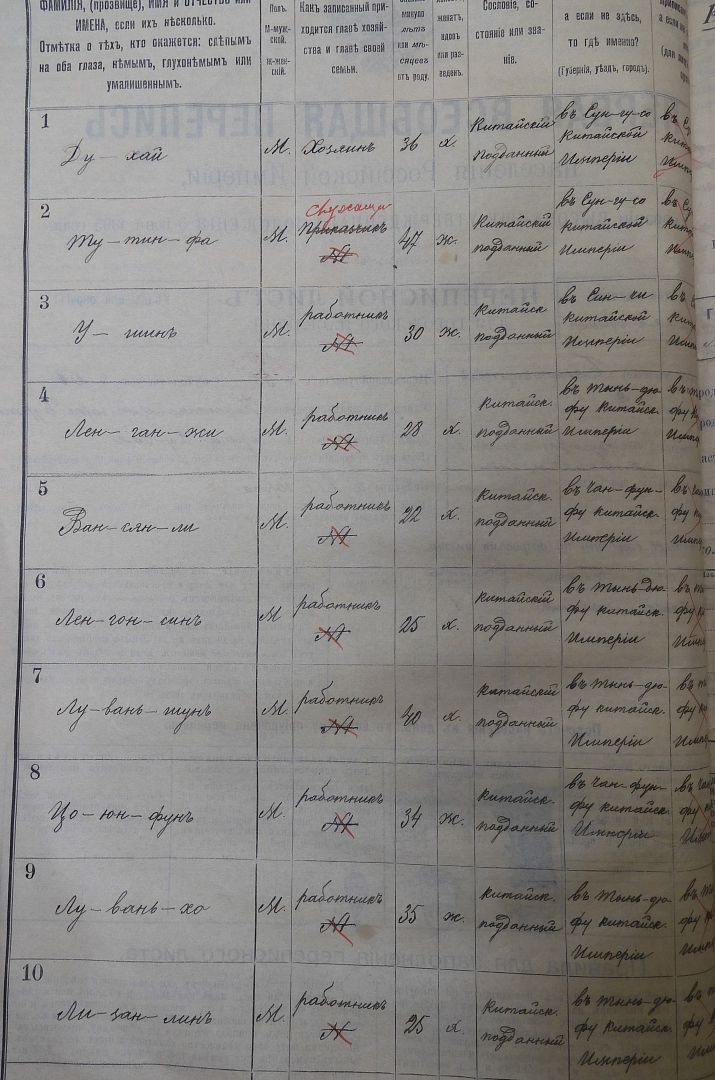Scientific Russia: historians of Altai State University learned from the archives about the epidemic in the Far East during the First General Census
 As part of a unique project to restore data from the First General Population Census of the Russian Empire in 1897, Elena Bryukhanova together with a colleague in the department N.V. Nezhentseva studied materials from the Far Eastern archives and museums. In 2019, a project entitled "Urbanization Processes in Siberia at the Turn of the 19th-20th Centuries: An Integrated Approach to the Analysis of the Urban Population Based on the Materials of the First General Census of the Population of the Russian Empire in 1897" won the competition of the Presidential Program for research by scientific groups led by young scientists of the Russian Science Foundation, having won a grant support of 11 million rubles.
As part of a unique project to restore data from the First General Population Census of the Russian Empire in 1897, Elena Bryukhanova together with a colleague in the department N.V. Nezhentseva studied materials from the Far Eastern archives and museums. In 2019, a project entitled "Urbanization Processes in Siberia at the Turn of the 19th-20th Centuries: An Integrated Approach to the Analysis of the Urban Population Based on the Materials of the First General Census of the Population of the Russian Empire in 1897" won the competition of the Presidential Program for research by scientific groups led by young scientists of the Russian Science Foundation, having won a grant support of 11 million rubles.
The purpose of the trip was to identify materials on the urban population of the Amur and Primorsky regions of the late 19th-20th centuries. According to preliminary data, the State Archives of the Amur Region and the Russian State Historical Archives of the Far East have preserved the primary materials of the 1897 census, which are the main sources of the project.
“Our expectations were met! We found census forms for the city of Blagoveshchensk, but they were divided between two archives. This unique situation was due to the peculiarities of the formation and existence of funds. In addition, some of the cases turned out to be in poor physical condition, we wrote an application for restoration and we hope that soon they will “return” to the reading room,” says Elena.” However, not very many census forms have survived, but it is noteworthy that information has been preserved about the inhabitants of different parts of the city, as well as about the Chinese population. The preservation of the census forms for the Chinese population is of great interest, since, according to the report of the police chief, on the eve of the census, the Chinese, Manchus and Koreans went beyond the Amur, but later began to return, although it was extremely difficult to obtain information from them. For example, there is information about the Chinese owners and workers of several brick sheds (a form of brick production) who lived in yurts."
 Thanks to the data obtained, which will be combined in the database of the interactive web resource being developed within the framework of the project, Altai State University scientists will now be able to make a significant contribution to the reconstruction of the most complete picture of the population of Blagoveshchensk 120 years ago.
Thanks to the data obtained, which will be combined in the database of the interactive web resource being developed within the framework of the project, Altai State University scientists will now be able to make a significant contribution to the reconstruction of the most complete picture of the population of Blagoveshchensk 120 years ago.
In addition to the urban population itself, historians managed to work with data on the organization of the census and reports on its conduct. They were especially impressed by the report of the scribes of the Peter and Paul District Commission. The fact is that during the period of the census, an "epidemic disease that struck most of the population of the district", including some heads of the census districts, spread in the district. This was the period of "the strongest blizzard" and "deep snows", which prevented the nomadic aliens from coming to the designated census sites. Under these conditions, the district doctor and two assistants, in the cold, from which the ink froze in the pen, and the fingers could not hold the pencil, from camp to camp were brought into the census sites of Koryaks, Lamuts and Tungus. The results of their labor have been partially preserved.
The revealed materials made it possible to supplement the database on the urban population of Siberia at the turn of the XIX-XX centuries, to expand the understanding of the peculiarities of the census on the outskirts of the Russian Empire, as well as the prospects of cooperation with the archives of the Far East among AltSU scientists.